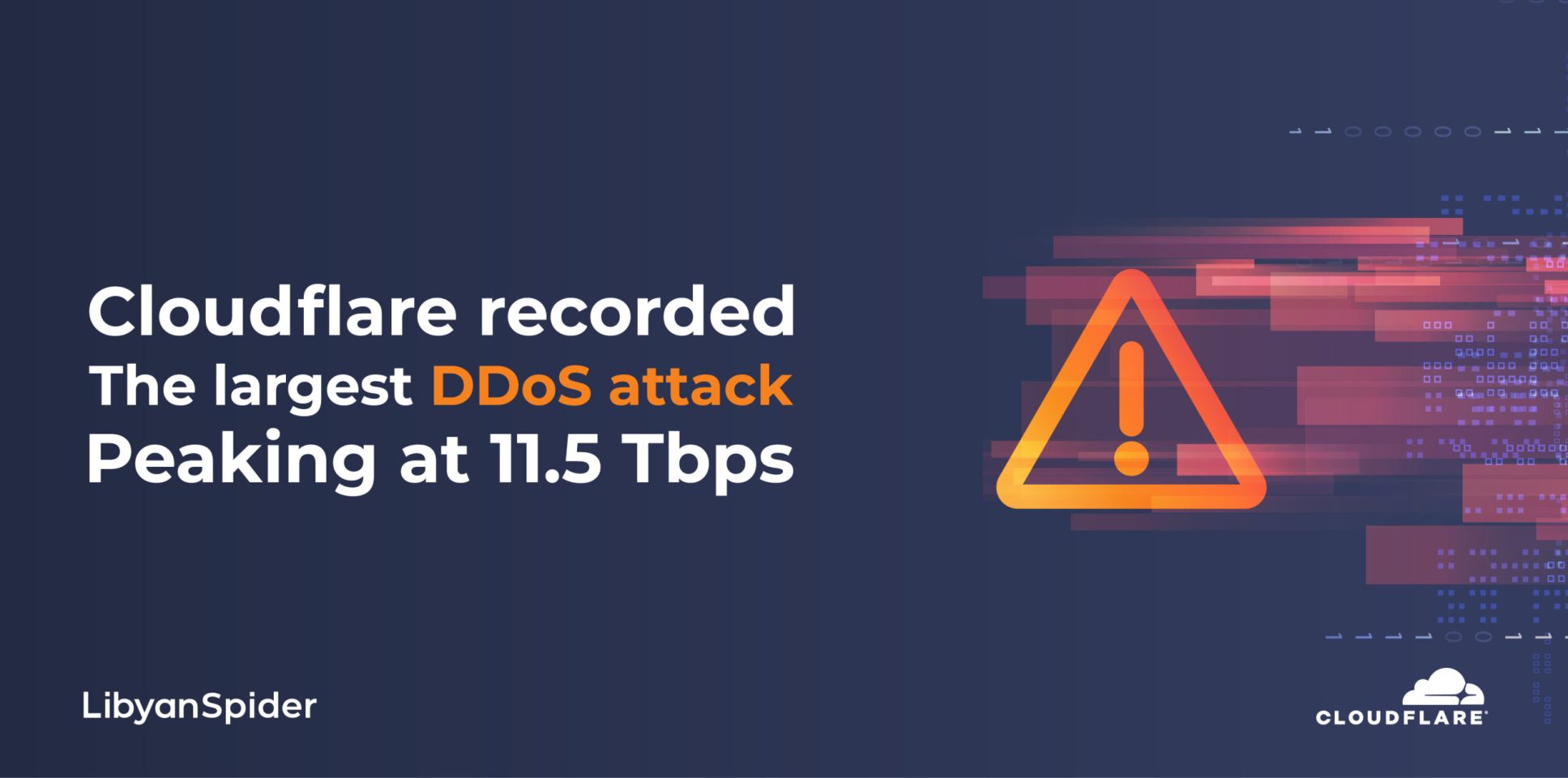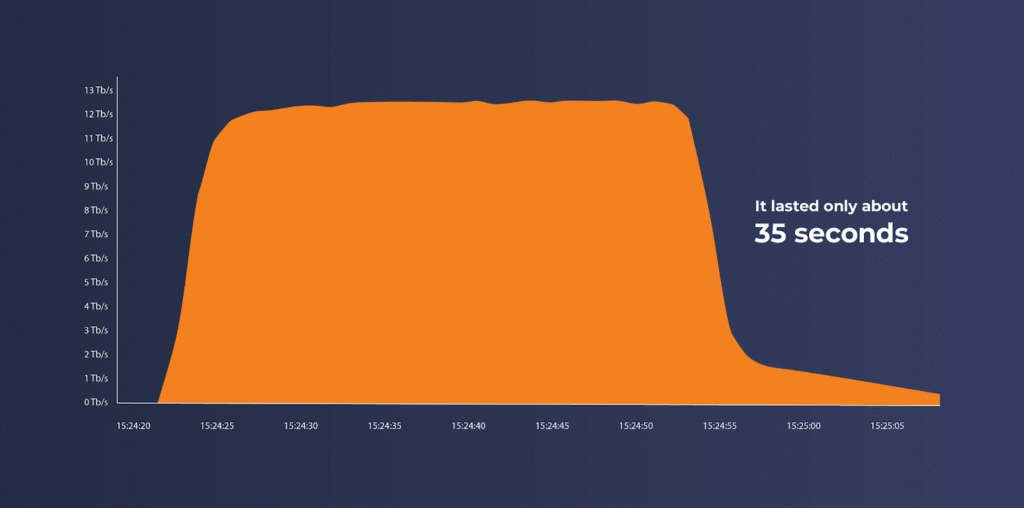Blog
Stay updated with our new news!
Cloudflare’s Record-Breaking 11.5 Tbps DDoS Attack: Why Every Business Should Pay Attention

Over the past weeks, while many were offline, a digital tsunami was unleashed. Cloudflare’s systems detected and neutralized the largest DDoS attack ever recorded, a monstrous 11.5 terabits per second (Tbps) assault. This wasn’t just another cyber event; it was a clear signal of a new era in digital threats that no business can afford to ignore. This article breaks down what happened, why it’s a critical wake-up call, and the concrete steps you can take to defend your own digital assets.
Anatomy of a Record-Shattering Attack

The attack was a hyper-volumetric UDP flood that peaked at an unprecedented 11.5 Tbps and 5.1 billion packets per second. To put that in perspective, this single attack surpassed Cloudflare’s previous record of 7.3 Tbps from just a few months prior in May 2025. The entire assault lasted only about 35 seconds, highlighting the incredible speed and intensity of modern cyber threats.
The most remarkable part of this story is how it was stopped. The attack was detected and neutralized entirely by Cloudflare’s automated defense systems.This autonomous mitigation meant that despite the historic size of the assault, the targeted customer experienced no reported downtime.
An 11.5 Tbps attack may seem like a concern only for large enterprises, but it signals a broader trend that threatens everyone. DDoS attacks are growing rapidly in both size and frequency, driven by 5G networks and insecure IoT devices, with experts warning of 20 Tbps assaults ahead. This incident is a wake-up call: attackers are constantly evolving, and outdated on-premises defenses can no longer cope. Only resilient, cloud-based protection can withstand the scale of modern threats—making it essential not just to avoid downtime, but to ensure long-term digital resilience.
How to Protect Your Business: A Proactive Defense Plan
You don’t have to be a massive corporation to be a target. The strategies used to fend off this record-breaking attack are scalable and accessible. Based on the lessons from this event, here are four crucial steps every business should take:
1. Deploy Cloud-Based DDoS Protection: On-premises hardware can be quickly overwhelmed. A cloud-based DDoS protection service offers scalable, effectively unlimited capacity to absorb even the largest hyper-volumetric attacks. This is your first and most critical line of defense.
2. Implement Automated Detection and Response: The 11.5 Tbps attack lasted only 35 seconds. Human intervention is simply too slow to be effective. Modern security solutions that can autonomously detect and mitigate threats in real-time are no longer a luxury—they are a necessity.
3. Adopt Proactive Security Models: Don’t wait for an attack to find your weaknesses. Embrace a zero-trust security model, conduct continuous network monitoring, and perform regular penetration testing. Proactively identifying and closing vulnerabilities is far more effective than reacting to a crisis.
4. Develop a Clear Incident Response Plan: Know exactly what to do when an attack occurs. Your plan should include immediately contacting your DDoS protection provider, documenting the incident thoroughly, and—critically—avoiding making infrastructure changes during the attack, which can make things worse.
Conclusion
The 11.5 Tbps DDoS attack wasn’t just a new record; it was a warning shot. It demonstrated the rapidly escalating power of cybercriminals and the absolute necessity for modern, automated, and cloud-native defenses. By understanding the trends and implementing a proactive defense plan built on cloud protection and automation, you can ensure your business remains resilient.
The question is no longer if a large-scale attack will happen again, but when.
For more information about Cloudflare and its cloud-based protection solutions, visit the link
Share:
Leave a Reply